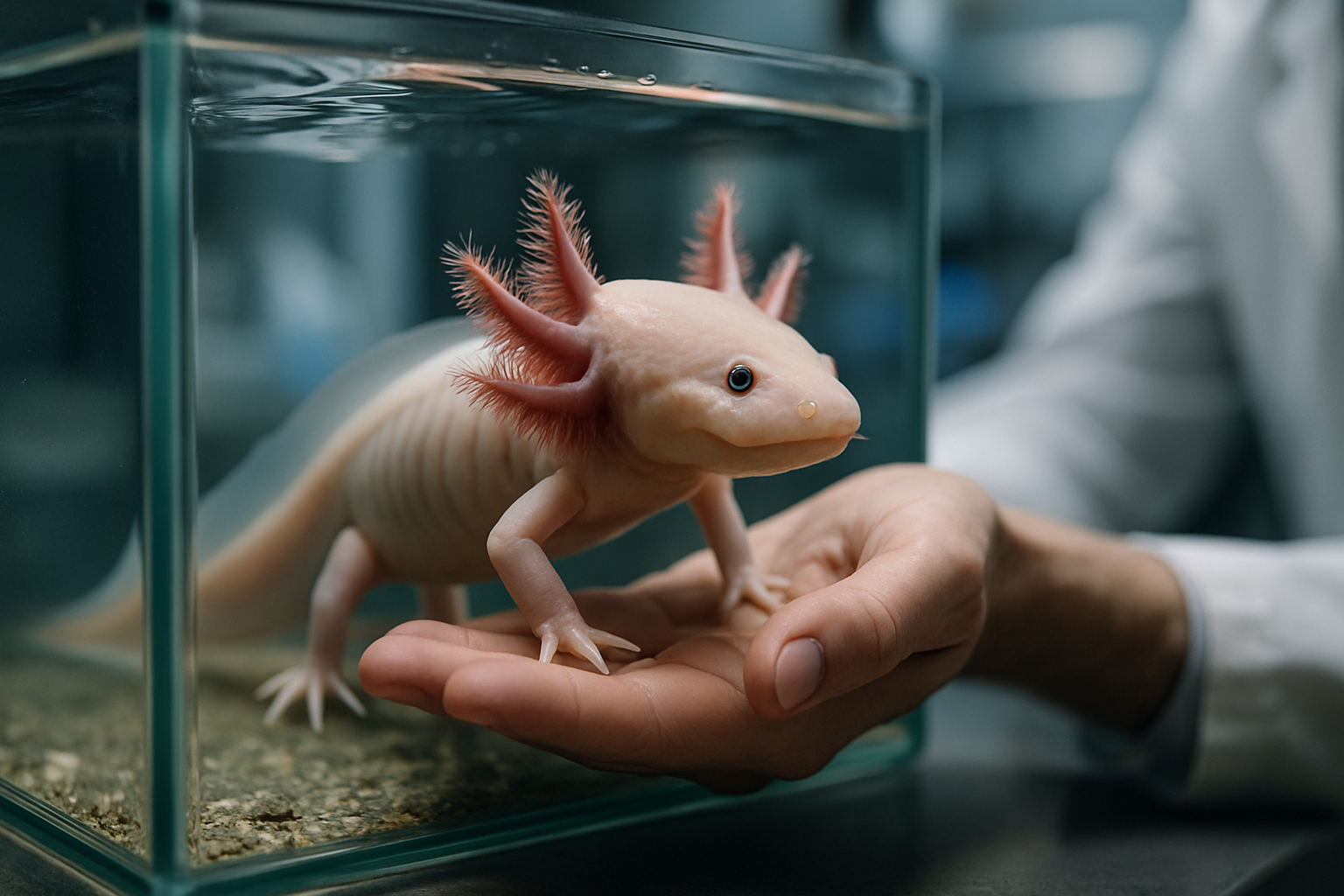Decoding the Secret Lives of Axolotls: Underwater Marvels with Regenerative Superpowers
In the murky depths of Mexico's ancient lakes, a peculiar creature with an otherworldly appearance and extraordinary abilities thrives. The axolotl, often dubbed the "walking fish," has captivated scientists and animal enthusiasts alike with its remarkable regenerative capabilities and perpetual youthfulness. This article delves into the fascinating world of axolotls, exploring their unique biology, conservation status, and potential impact on medical research.

The Axolotl’s Evolutionary Journey
The axolotl’s story begins millions of years ago in the lakes of central Mexico. These critically endangered amphibians evolved in isolation, developing unique adaptations that set them apart from other salamander species. Unlike their relatives, axolotls retain their larval features throughout their lives, a phenomenon known as neoteny. This evolutionary quirk allows them to remain aquatic and keeps their regenerative abilities in high gear.
Unraveling the Regeneration Mystery
Perhaps the most captivating aspect of axolotls is their unparalleled regenerative abilities. These creatures can regrow entire limbs, organs, and even parts of their central nervous system with astonishing precision. Scientists have discovered that axolotls possess specialized cells called blastema, which can differentiate into various tissue types during the regeneration process. This remarkable ability has made axolotls invaluable models for studying tissue regeneration and its potential applications in human medicine.
Axolotls in the Wild: A Precarious Existence
Despite their resilience on an individual level, axolotls face a dire situation in their natural habitat. The expansion of Mexico City and the resulting pollution and habitat destruction have pushed these creatures to the brink of extinction in the wild. The Xochimilco canals, once teeming with axolotls, now harbor only a fraction of their former population. Conservation efforts are underway to protect and restore their habitat, but the challenge remains daunting.
The Rise of Axolotls in Captivity
As wild populations dwindle, axolotls have found a new lease on life in captivity. Their unique appearance and low-maintenance care requirements have made them increasingly popular in the exotic pet trade. Hobbyists and researchers alike maintain axolotl colonies, ensuring the species’ survival even as their natural habitats disappear. The pet trade has also contributed to a wider appreciation of these remarkable creatures, potentially aiding conservation efforts.
Axolotls in Scientific Research
The scientific community has long recognized the potential of axolotls in various fields of study. Their regenerative abilities make them invaluable models for research into tissue engineering, organ regeneration, and cancer treatment. Scientists are working to unravel the genetic and cellular mechanisms behind axolotl regeneration, hoping to apply these insights to human medicine. The study of axolotls has already yielded promising results in areas such as spinal cord injury treatment and limb regeneration.
The Ethical Considerations of Axolotl Research
While the potential benefits of axolotl research are immense, it also raises ethical questions. The use of these endangered creatures in scientific experiments has sparked debates about the balance between conservation and scientific progress. Researchers are developing alternative methods, such as cell cultures and computer models, to reduce reliance on live axolotls. However, the unique biology of these animals still makes them irreplaceable in certain areas of study.
Axolotls in Popular Culture
The distinctive appearance and extraordinary abilities of axolotls have captured the public imagination, leading to their inclusion in various forms of media. From video games to children’s books, these salamanders have become cultural icons. This increased visibility has helped raise awareness about their conservation status and the importance of protecting endangered species. The axolotl’s growing popularity has also led to a surge in demand for axolotl-themed merchandise and educational materials.
The Future of Axolotls: Conservation and Beyond
As we look to the future, the fate of axolotls hangs in the balance. Conservation efforts are crucial to preserving their natural habitats and ensuring the genetic diversity of wild populations. At the same time, continued research into their unique biology may unlock new frontiers in regenerative medicine and our understanding of evolution. The axolotl serves as a powerful reminder of the wonders that exist in the natural world and the importance of preserving biodiversity for future generations.
In conclusion, the axolotl stands as a testament to the marvels of evolution and the untapped potential of the natural world. From their prehistoric origins to their current status as scientific marvels, these creatures continue to surprise and inspire us. As we work to protect their future, we also unlock the secrets that may revolutionize human medicine and our understanding of life itself. The story of the axolotl is far from over, and the chapters yet to be written promise to be as fascinating as those that have come before.




